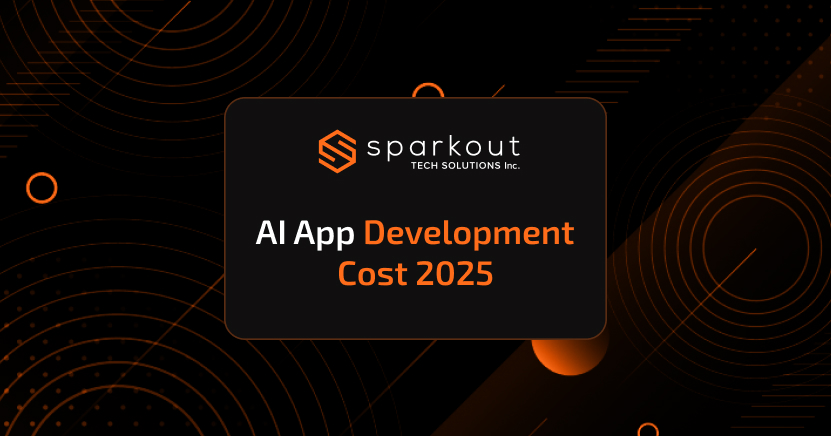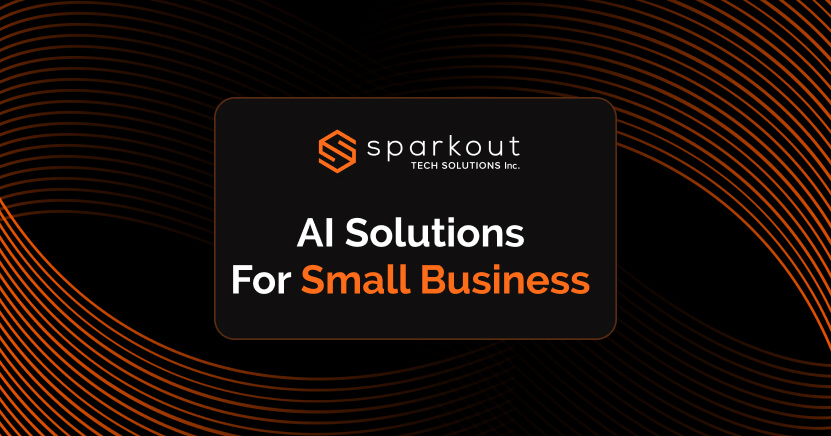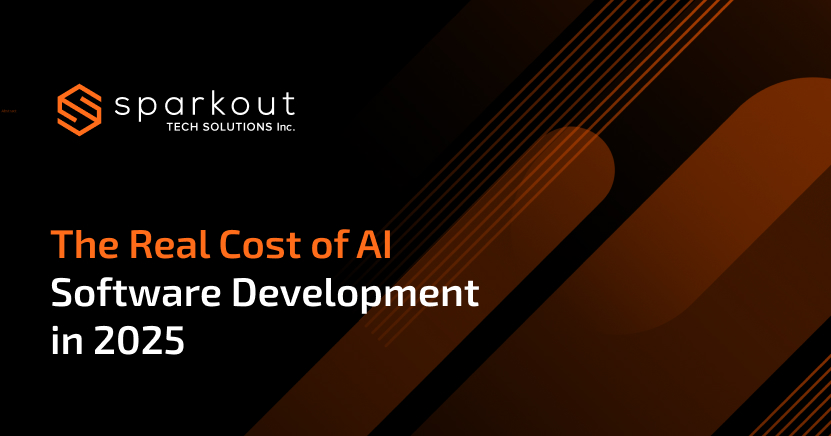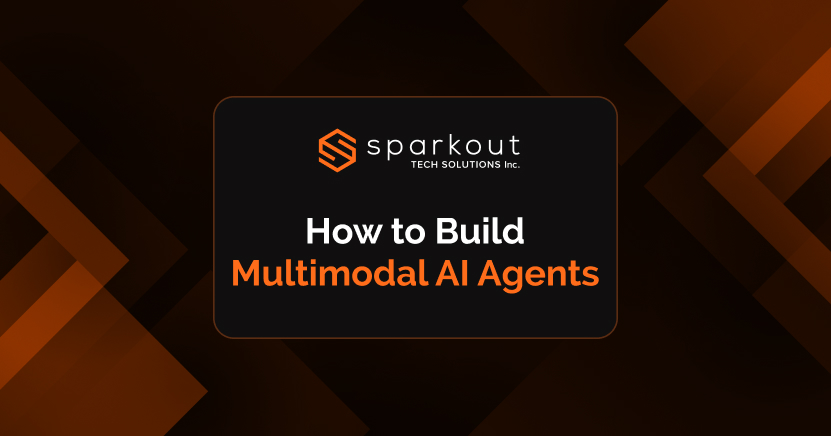Artificial Intelligence (AI) is shifting how modern businesses operate - from automating customer support to streamlining logistics and predicting user behavior. As per the 2025 McKinsey report, over 72% of enterprises have started integrating AI into at least one of their business functions. While adoption keeps growing, every founder and CTO has a question: What does the real AI app development cost look like?
Businesses have started investing in AI solutions to stay ahead in the competitive marketplace. However, AI app development costs vary based on business goals - especially with the rise of generative AI tools, custom LLMs, and real-time analytics. A custom chatbot development pricing start at $20,000, while an enterprise-grade AI platform with custom LLMs, real-time data analysis, and security layers will cost more.
Whether you are building an NLP-based recommendation engine or an AI-powered analytics dashboard, the cost of artificial intelligence app development depends on your use case, data complexity, and desired scalability.
This guide breaks down the real cost of AI app development, reveals hidden expenses, and shares tips to stay on budget without compromising performance or innovation.
What Factors Influence AI App Development Cost?
The cost to develop an AI app isn't fixed; it varies significantly based on your goals, features, and technical requirements. The key factors shaping AI app development pricing are explained below:
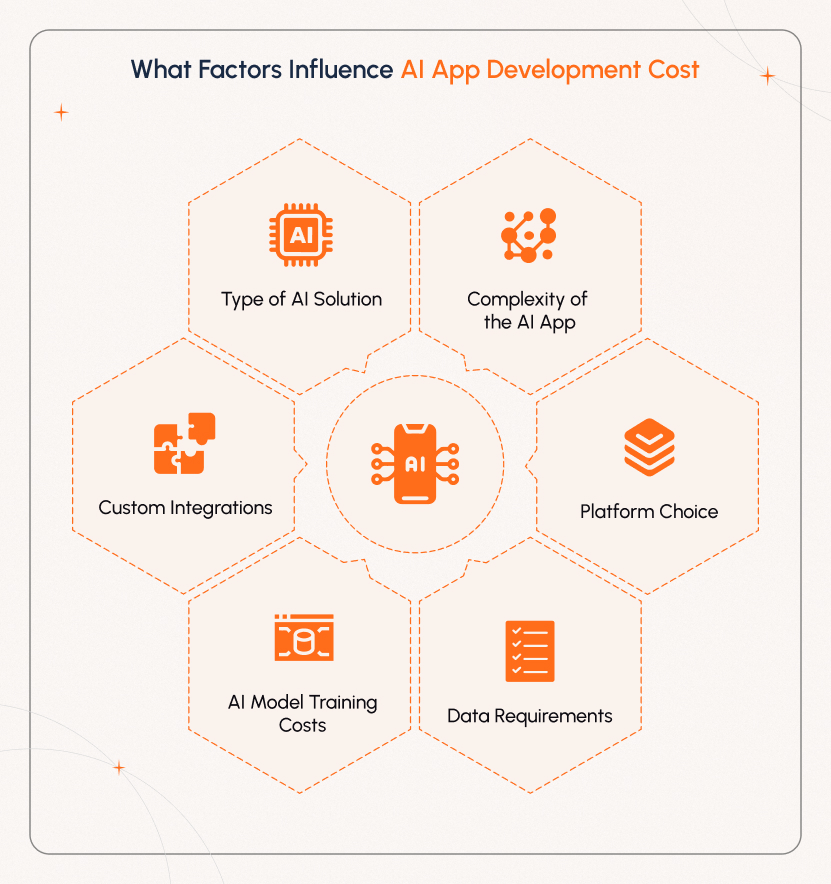
1. Type of AI Solution
The type of AI functionality you are about to build plays a major role in determining the cost.
- Chatbots & Virtual Assistants are relatively lower-cost, especially those built using pre-built NLP APIs.
- Computer Vision Apps require large datasets and specialized training and hence come with higher costs.
- Natural Language Processing/NLP App development costs range from moderate to high, depending on whether you are using pre-trained models or training custom LLMs for tasks like classification, summarization, or language generation.
- Predictive Analytics or Recommendation Engines are moderate to high cost and are influenced largely by data volume, quality, and the complexity of the predictive algorithms required.
2. Complexity of the AI App
If your goal is to develop a more intelligent and adaptive AI app, then the development cost will be higher.
A simple rule-based chatbot is less expensive than a context-aware NLP assistant.
Basic model AI implementation costs less and takes minimal time, while deep learning neural networks demand more engineering time and computing resources.
3. Platform Choice
The platform you choose influences the overall AI development cost.
Web, Android, iOS, or cross-platform apps each have unique architecture, development effort, testing, and optimization needs.
Cross-platform AI software development costs seems effective, although it may limit access to native AI tools.
4. Data Requirements
AI systems require data, and working with it takes time. The volume of the data, quality, and the need for data cleaning and labelling will add to the cost. Infrastructure costs rise when your app needs real-time data pipelines or ingestion.
5. AI Model Training Costs
Training a model from scratch is resource-intensive and expensive, especially for deep learning. However, using pre-trained models like OpenAI, Hugging Face, or Google Vertex AI can reduce time and cost.
Additionally, training requires GPU or TPU usage, which in turn affects your budget.
6. Custom Integrations
Development cost and time increase when you connect your AI app to APIs, CRMs, legacy systems, or analytics dashboards. In addition, custom workflows and business-specific logic often require bespoke engineering.
Whether you are developing a new AI app or enhancing an existing one, AI software development pricing is directly linked to your solution's use case, data needs, infrastructure, and long-term scalability goals.
AI App Development Cost Breakdown – 2025 Estimates
To help businesses plan effectively, here is a high-level cost breakdown for AI development based on common use cases.
| App Type | Estimated Cost (USD) |
|---|---|
| Basic AI Chatbot App | $15,000 – $35,000 |
| NLP-Based Customer Support App | $30,000 – $70,000 |
| Predictive AI Model App | $50,000 – $100,000 |
| Custom AI App with Deep Learning | $100,000 – $250,000+ |
These estimates are based on AI model integration, backend and frontend development, testing, and deployment. Costs may differ based on data requirements, infrastructure needs, and platform complexity.
Connect with us to get AI solutions tailored to your goals, timeline, and cost-efficiency.
Cost of AI Features & Tools
By integrating specific AI functionalities and tools, businesses significantly impact the overall AI app development cost. Here’s how:
1. AI Model Licensing or Custom Training
Developing custom models is costly, especially for deep learning applications. The cost typically ranges from $20,000 to $100,000+ based on model complexity, volume of data, and training time.
2. NLP Libraries & Frameworks
Using open-source tools like Hugging Face or spaCy reduces licensing costs. However, it requires skilled developers to implement, tune, and integrate them seamlessly.
3. AI/ML APIs
Platforms like OpenAI, Google Cloud AI, and AWS SageMaker provide powerful pre-trained models and services. But they often come with recurring API usage fees that scale with usage volume and latency needs.
4. Hosting & Infrastructure
Whether you prefer using cloud services like AWS, Azure, or GCP, or on-premise GPU/TPU clusters, the infrastructure costs will add up to the AI app development budget. This includes ongoing expenses for training models, running inferences in real time, and scaling compute resources as needed.
Altogether, these components influence your total AI app development cost - especially for high-performance or enterprise-grade applications.
What's Beyond the Build – Hidden Expenses in AI App Development
Many times, businesses overlook the true AI app development cost by ignoring critical components beyond just coding. Here are the key hidden costs that often go unnoticed:
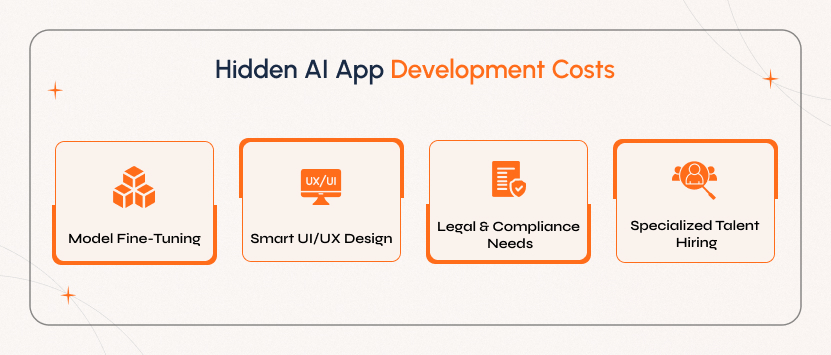
1. Ongoing Model Fine-Tuning
AI models need continuous refinement based on real-world usage, new data, and evolving accuracy goals. This results in ongoing development and infrastructure costs.
2. UI/UX Design for Intelligent Interactions
Designing user experiences that feel natural with AI requires UI/UX expertise. This includes chat flows, voice prompts, and real-time predictions—adding to your budget beyond standard app UI design.
3. Legal & Ethical Compliance
AI apps must meet data privacy laws and be free from bias or ethical violations. This involves audits, legal reviews, and specialized tools, which add to the overall cost.
4. Specialized Talent Hiring
Hiring skilled AI developers or data scientists is never cheap. You can expect to pay $50 or more per hour based on their expertise, location, and tech stack.
Ignoring these hidden factors can lead to budget overruns or compromise product quality. Planning for everything upfront ensures your AI app development stays on track—financially and strategically.
AI App vs Traditional App Development Cost
Unlike traditional app development, AI app development involves a different level of complexity and investment. Here’s a side-by-side comparison.
| Feature | Traditional App | AI App |
|---|---|---|
| Core Development | $20K – $60K | $30K – $100K+ |
| Data & Training | Minimal or none | $10K – $100K+ |
| Maintenance | Moderate | High (continuous model tuning) |
| Talent Needed | General Developers | AI/ML Engineers + App Developers |
It’s important to note that AI apps have higher upfront costs due to data pipelines, model training, and specialized talent. However, when implemented strategically, businesses can unlock efficiency, personalization, and long-term ROI far beyond traditional apps.
Cost Optimization Tips for AI App Projects
If you’re thinking of reducing your AI app development cost without sacrificing performance or scalability, here are some proven strategies:
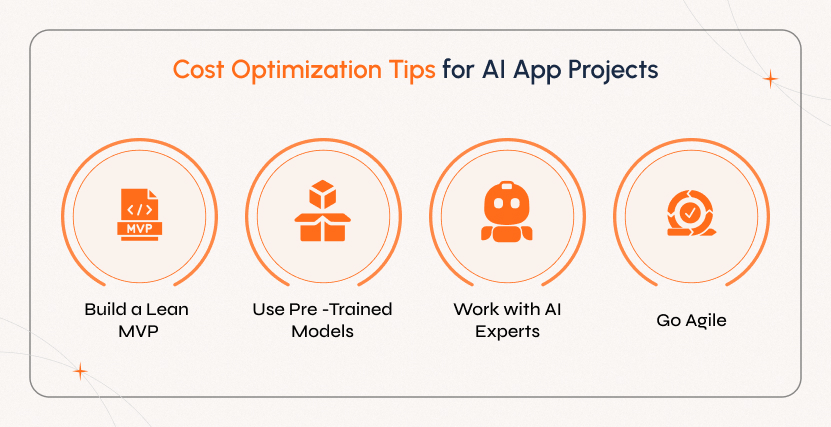
1. Start with a Lean MVP
Focus on core AI features first. Validate your concept with minimal investment before committing to full-scale development.
2. Choose Pre-Trained Models & APIs
Use pre-trained models like GPT or BERT, or platforms like OpenAI API or Google Vertex AI instead of training from scratch. This reduces both development time and infrastructure costs.
3. Partner with Experienced AI Teams
Outsourcing to a skilled AI development company minimizes trial-and-error, speeds up delivery, and helps avoid expensive technical debt.
4. Adopt Agile Development Practices
Build in sprints, gather feedback early, and iterate based on real-world performance. This helps avoid scope creep and ensures your budget stays aligned with your goals.
Get expert guidance to budget AI costs and boost ROI efficiently
Why Sparkout Tech Is the Most Cost-Efficient Choice for AI App Development
At Sparkout Tech, we go beyond just building AI apps—we maximize ROI and optimize your AI app development cost from day one. Here’s how we help your investment work smarter:
1. We offer transparent pricing with detailed cost breakdowns.
2. With pre-trained models and scalable architecture, we deliver cost-efficient development.
3. Get tailored AI app solutions that match your goals and budget.
4. We provide end-to-end development that avoids hidden costs.
Final Thoughts – Plan Your AI App Budget Wisely
Understanding AI app development cost is the first step toward making smart investment decisions. From app development prices to custom AI solution costs, having a clear roadmap helps businesses avoid pitfalls and stay in control.
Get expert insights to structure your AI project for success
